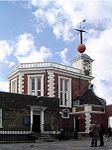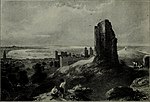Queen Elizabeth's Oak, Greenwich Park

Queen Elizabeth's Oak was a veteran oak tree in Greenwich Park, London. Seeded in the 12th century, the tree formed part of the grounds of the Palace of Placentia, home to the Tudor royal family. Henry VIII is said to have danced around the tree with Anne Boleyn. Their daughter Elizabeth I, after whom the tree is named, is said to have picnicked beneath its canopy, or else within its hollow trunk. When the palace grounds became Greenwich Park, the hollow tree was used as a prison for criminals caught on the grounds. The tree died in the 19th century but was left standing, partly supported by ivy. It fell in a storm in June 1991 and has been left lying where it fell, protected by a fence and marked with a plaque.
Excerpt from the Wikipedia article Queen Elizabeth's Oak, Greenwich Park (License: CC BY-SA 3.0, Authors, Images).Queen Elizabeth's Oak, Greenwich Park
Duke Humphrey Road, London
Geographical coordinates (GPS) Address Website Nearby Places Show on map
Geographical coordinates (GPS)
| Latitude | Longitude |
|---|---|
| N 51.478104 ° | E 0.001764 ° |
Address
Greenwich Park
Duke Humphrey Road
SE10 8QY London (Royal Borough of Greenwich)
England, United Kingdom
Open on Google Maps










